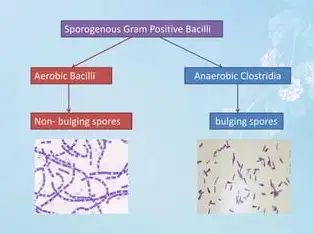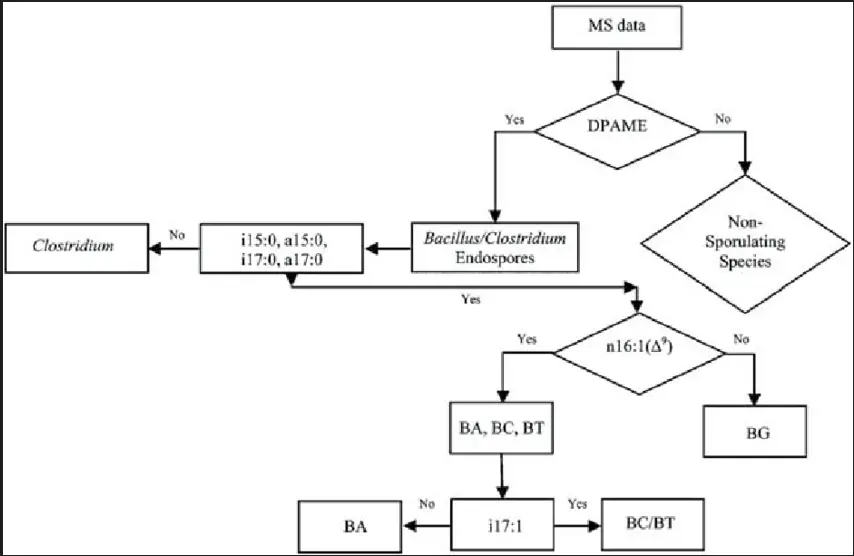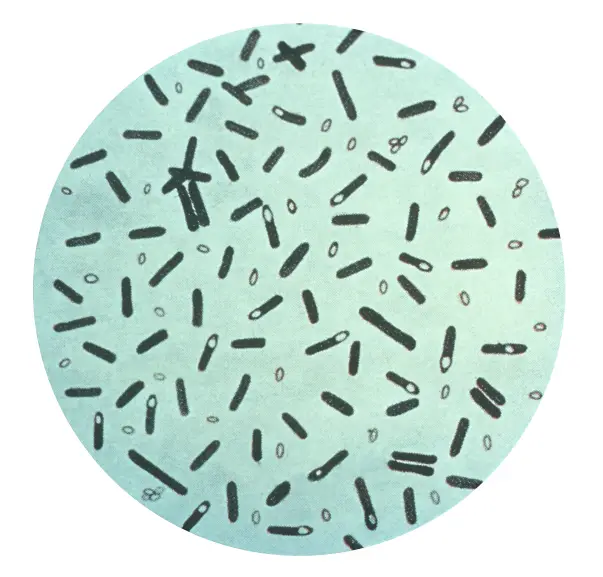Bacillus and Clostridium are two genera of bacteria with distinct characteristics and significant roles in both environmental and industrial contexts. These microorganisms are studied extensively due to their diverse capabilities and impacts on various sectors, including healthcare, agriculture, and bioengineering. Each belongs to a different taxonomic classification and possesses unique traits that influence their behavior and utility in different environments.
The primary difference between Bacillus and Clostridium lies in their oxygen tolerance and metabolic processes. Bacillus species are generally aerobic, thriving in environments with oxygen, whereas Clostridium species are predominantly anaerobic, requiring environments devoid of oxygen to function effectively. This fundamental distinction drives their roles in nature and their applications in science and industry.
Both groups exhibit a fascinating array of properties that allow them to inhabit diverse ecological niches. They can form spores to survive harsh conditions, and while both are found ubiquitously in the environment, their impacts range from the benign to the pathogenic. Understanding their structure, growth conditions, and potential uses is crucial for advancing scientific research and developing new technologies.

Bacillus Overview
Definition and Characteristics
Bacillus is a genus of bacteria that are rod-shaped and Gram-positive. These microorganisms are notable for their ability to form endospores, a type of dormant cell that is extremely resistant to harsh conditions such as heat, UV radiation, and disinfectants. This survival mechanism allows them to endure environments that are not conducive to typical bacterial life. Bacillus species are predominantly aerobic, meaning they require oxygen to grow, although some species can also grow under anaerobic conditions.
Common Species and Uses
Bacillus includes several species that are crucial to both the environment and industrial applications:
- Bacillus subtilis: Known for its role in soil health, it also produces antibiotics and is used as a model organism in laboratory studies.
- Bacillus thuringiensis: Widely used in agriculture as a natural pesticide, it produces toxins that are harmful to insect larvae but safe for plants and animals.
- Bacillus cereus: While it is often associated with food spoilage and food poisoning, research is exploring its enzymatic properties for industrial use.
These species demonstrate the genus’s versatility and importance, extending their utility from ecological balance to commercial bio-product manufacturing.
Clostridium Overview
Definition and Properties
Clostridium is a genus of bacteria that are also Gram-positive but are distinctively anaerobic. They are capable of producing spores similar to Bacillus but thrive in the absence of oxygen. The cells of Clostridium species are often rod-shaped, but can also be irregular, with some forming filamentous structures. Their anaerobic nature and ability to produce toxins make them significant in both medical and environmental contexts.
Key Species and Implications
Several Clostridium species are particularly notable due to their impact on human health and their utility in industry:
- Clostridium botulinum: The producer of botulinum toxin, which causes botulism. This toxin has also been adapted for use in medicine and cosmetics.
- Clostridium difficile: Known for causing severe diarrhea and colitis, particularly after antibiotic use, highlighting the challenges of antibiotic resistance.
- Clostridium perfringens: Causes food poisoning and gas gangrene, but is also studied for its enzymes that can degrade tough plant materials in biofuel production.
These species illustrate the dual nature of Clostridium: as both a pathogen and a valuable resource in biotechnological applications.
Taxonomic Classification
Kingdom and Phylum
Both Bacillus and Clostridium belong to the kingdom Bacteria, which encompasses prokaryotic microorganisms. They are classified under the phylum Firmicutes, characterized by cells with thick, strong cell walls. This phylum is known for its diversity, with species ranging from harmless environmental bacteria to serious pathogens.
Genetic Distinctions
The genetic makeup of Bacillus and Clostridium reflects their adaptation to different environmental challenges. Bacillus species often have large genomes that enable them to metabolize a variety of substances and survive in diverse conditions. Conversely, Clostridium species typically have smaller genomes with genes geared towards survival in anaerobic conditions and producing potent toxins.
Physical Structures
Cell Shape and Size
Bacillus bacteria are typically rod-shaped and can form long chains. They vary in size but generally range from 0.5 to 1.2 micrometers in diameter and from 2 to 10 micrometers in length. Clostridium cells also are rod-shaped but can vary more significantly in length, and some species form distinctive drumstick or tennis racket shapes due to their spore-forming capabilities.
Spore Formation Differences
Spore formation is a critical differentiator between Bacillus and Clostridium. Both genera form endospores, but the triggers for spore formation and the location of the spores within the cells differ. Bacillus spores are typically cylindrical and located centrally, whereas Clostridium spores are often swollen and situated at the ends of the cells, giving them a bulging appearance. This structural adaptation in Clostridium is crucial for survival in anoxic environments, as the spores can remain viable for years, germinating when conditions become favorable.

Metabolic Traits
Oxygen Requirements
The metabolic landscape of Bacillus and Clostridium is sharply defined by their oxygen requirements. Bacillus species are primarily aerobic, leveraging oxygen to fuel their energy production. This ability allows them to thrive in environments rich in oxygen, from soil surfaces to water systems. On the other hand, Clostridium species are obligate anaerobes, thriving in the absence of oxygen. Their metabolism is geared towards environments where oxygen is either absent or present in very low concentrations, such as deep soil layers, sediments, and the human gut.
Energy Production Pathways
Both Bacillus and Clostridium exhibit versatile energy production pathways that reflect their environmental adaptations. Bacillus species utilize the tricarboxylic acid (TCA) cycle and oxidative phosphorylation for energy production, processes that are efficient in oxygen-rich settings. In contrast, Clostridium species depend on fermentation pathways, breaking down carbohydrates to lactic acid, ethanol, acetone, and butyric acid, which are crucial for their survival under anaerobic conditions.
Ecological Roles
Environmental Impact
Bacillus and Clostridium play pivotal roles in their respective ecosystems. Bacillus bacteria are decomposers, contributing to nutrient cycling by breaking down organic materials. This process aids in soil fertility and the maintenance of a balanced ecosystem. Clostridium, while less understood, contributes to the anaerobic breakdown of materials in environments devoid of oxygen, playing a role in reducing biomass and producing gases like methane, important in both natural and engineered anaerobic processes.
Role in Human Health
The influence of Bacillus and Clostridium on human health is profound. Certain Bacillus strains are probiotics, beneficial to gut health and immunity. Conversely, Clostridium includes species that are pathogenic but also others that are part of the normal gut flora, aiding in digestion and even protecting against more harmful bacteria.
Industrial and Medical Uses
Bacillus in Biotechnology
Bacillus species are stars in biotechnological applications due to their robust enzymatic outputs and ability to produce antibiotics. They are employed in:
- Enzyme production: Producing enzymes that aid in food processing, detergent formulation, and leather treatment.
- Antibiotic production: Bacillus antibiotics are critical in treating bacterial infections resistant to traditional antibiotics.
- Agricultural applications: Bacillus-based biopesticides are effective against a variety of pests without harming crops or the environment.
Clostridium in Medicine
Clostridium’s role in medicine is twofold—pathogenic and therapeutic. Medically, Clostridium botulinum’s toxin is used in small, regulated doses to treat muscular disorders and cosmetically to reduce wrinkles. Clostridium difficile, while a challenge in antibiotic resistance, has paved the way for fecal transplant therapies that restore gut flora balance.
Pathogenicity and Diseases
Diseases Caused by Bacillus
While Bacillus is generally regarded as safe, Bacillus cereus is a notable exception, capable of causing foodborne illnesses characterized by diarrhea and vomiting. Effective food handling and cooking practices are crucial in preventing such infections.
Clostridium-related Illnesses
Clostridium species are responsible for more severe conditions:
- Clostridium difficile causes severe diarrhea and colitis, often after antibiotic use disrupts normal gut flora.
- Clostridium botulinum is infamous for botulism, a potentially fatal illness caused by its neurotoxin.
- Clostridium perfringens is known for gas gangrene and food poisoning, with rapid onset and severe implications.
Prevention and Control
Handling and Safety Measures
Proper handling and safety measures are critical in managing the risks associated with Bacillus and Clostridium:
- Hygiene: Regular handwashing and surface cleaning can prevent the spread of spores, particularly in healthcare settings.
- Proper cooking: Thorough cooking and food handling prevent Bacillus cereus-related foodborne illnesses.
- Sterilization: Using autoclaves and proper sterilization techniques in clinical environments to manage Clostridium infections.
Treatment and Management Strategies
Treating diseases caused by these bacteria includes:
- Antibiotics: Specific antibiotics are used to combat Clostridium infections, though care must be taken to avoid inducing resistance.
- Supportive care: For toxin-mediated diseases like botulism, supportive care in intensive care units may be necessary.
- Vaccination: Research into vaccines for preventing diseases like tetanus (caused by Clostridium tetani) is ongoing and crucial for public health.
Frequently Asked Questions
What is Bacillus?
Bacillus is a genus of rod-shaped, Gram-positive, mostly aerobic bacteria that are found in various environments. These bacteria are known for their ability to form durable spores when environmental conditions become unfavorable. Bacillus species are widely used in industrial applications, including the production of enzymes, antibiotics, and as biopesticides in agriculture.
What is Clostridium?
Clostridium refers to a genus of Gram-positive bacteria that demonstrate significant anaerobic capabilities, meaning they thrive in environments devoid of oxygen. These bacteria are notorious for their role in causing diseases such as tetanus, botulism, and colitis, but are also utilized in biotechnological processes like biogas production due to their metabolic diversity.
How do Bacillus and Clostridium differ in oxygen use?
Bacillus and Clostridium primarily differ in their oxygen requirements. Bacillus bacteria are mostly aerobic, utilizing oxygen for their metabolic processes, whereas Clostridium bacteria are anaerobic, relying on environments without oxygen to grow and reproduce. This difference profoundly affects their ecological roles and applications in industry.
What are the industrial uses of Bacillus?
Bacillus species are extensively used in various industries due to their enzymatic properties and ability to produce antibiotics. They are employed in the food industry for fermentation processes, in agriculture as biopesticides, and in waste management to decompose organic materials effectively.
How are Clostridium species medically significant?
Clostridium species are medically significant due to their ability to produce toxins that can cause severe diseases in humans and animals. However, they are also used in medical treatments, such as in the production of botulinum toxin for therapeutic applications and in probiotic treatments for intestinal health.
Conclusion
The exploration of Bacillus and Clostridium reveals a rich tapestry of biological functionality and potential applications that extend far beyond their roles as simple microorganisms. Their distinct characteristics not only underscore the diversity of bacterial life forms but also highlight the intricate balance of ecosystems and the potential for biotechnological innovation.
As research continues to unveil more about these bacteria, the possibilities for harnessing their capabilities expand, offering promising avenues for advancements in medicine, industry, and environmental management. The study of these organisms is a vivid reminder of the complexity and adaptability of life, and the continuous need for scientific curiosity and rigor in harnessing such biological diversity for human benefit.

